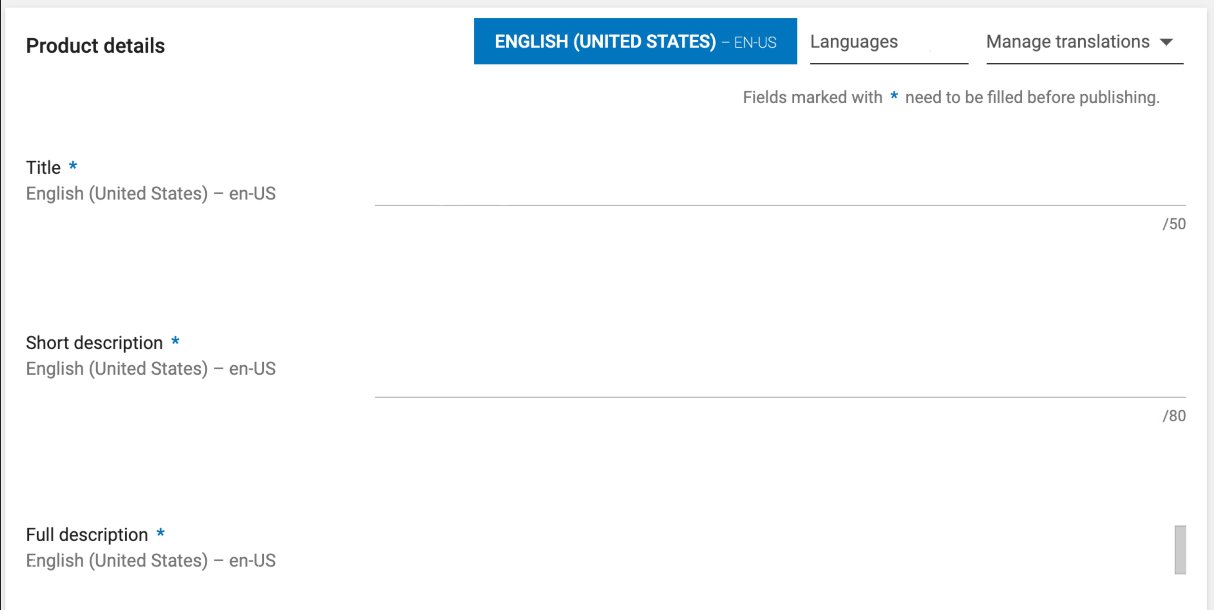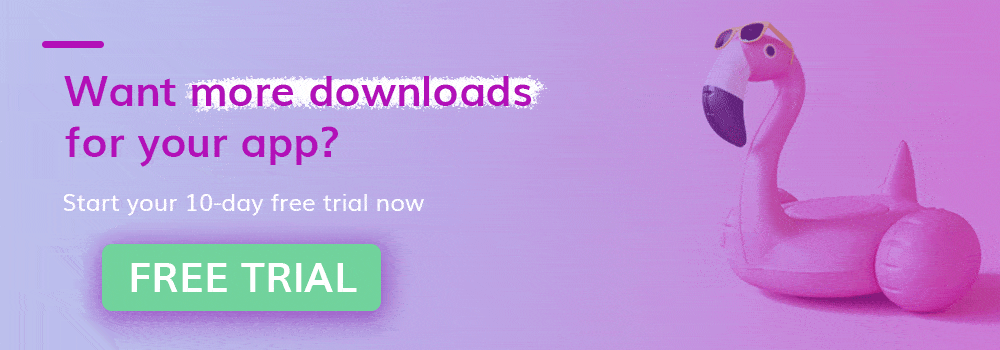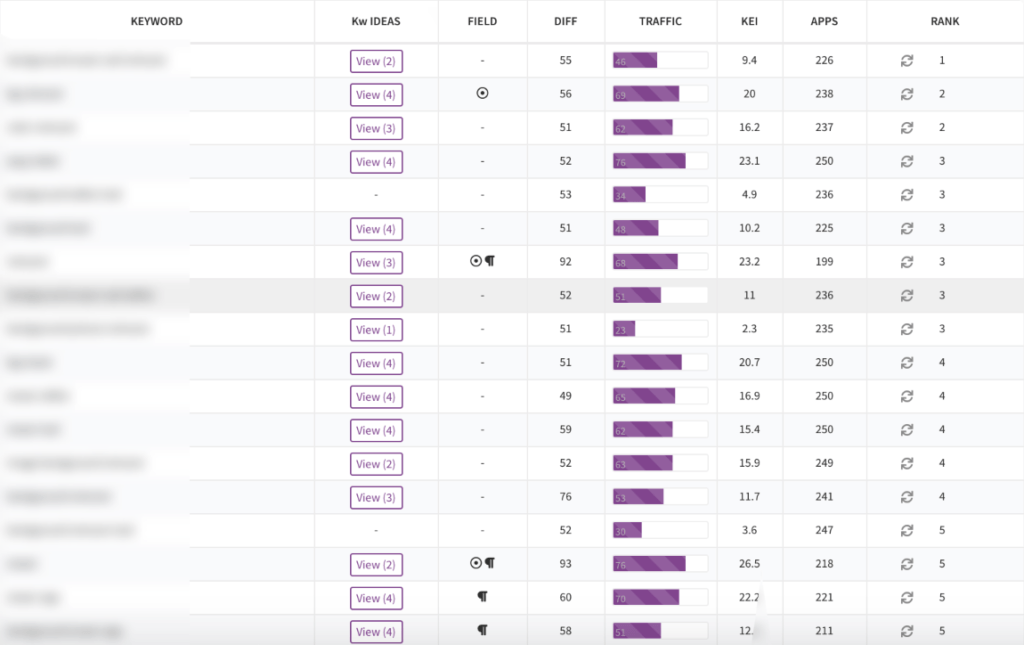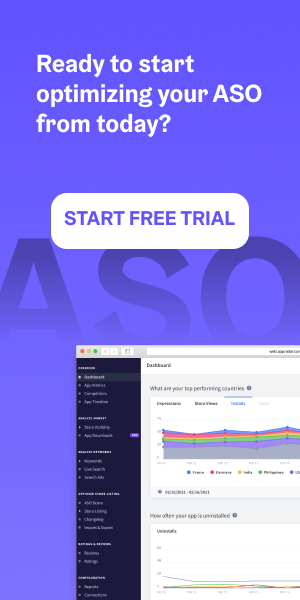In this post, we explain how, doing ASO, we grew 3X the organic downloads in the US of one of our clients. Enjoy!
When you start working with an app, for a specific country and language, you need to watch carefully its background: how it has been performing, as well as trying to analyze the keywords that may have been working best for it (and which have not). When doing App Store SEO for an app, everything has its own role:
- The country and language it is based on (and that you will be ‘attacking’).
- The category it ranks at.
- The store listing / product page.
- The keywords used on that listing.
- If you are (or not) going to invest in UA paid-marketing campaigns.
A few months ago, at PickASO we greeted with open arms a new client which has an Android app in 21 countries, but the Android-USA market was the one with not-so-good organic results, so they hired us in order to turn it upside-down. Keep in mind, they did not have in mind doing User Acquisition (UA) campaigns, so we had to make the best out of its visibility on the Google Play Store (all the work was going to be make on ASO).
*Disclaimer: Take notes that without investing in UA campaigns, the impact that you are going to make and the downloads that you are going to gain will be quite limited. The more downloads you get in a short period of time, the better the app visibility is going to be for such keywords; so the way to be more noticeable is to launch paid-marketing campaigns.
Table of Contents
The App Environment: a key ASO factor
The client this Case Study is based on is an Android app in the Photography Category, which is one of the most competitive categories that there is when trying to rank (and sell) your app. Here is specially harder that in any other category, because you need to brand your product really well in order to make it stand out, offering cool features and offers. Keeping up with the trends and new-features that other photography-apps may be launching is a must, so you better keep the usage of yours really up to date.
The main market our client wanted us to work towards to was Google Play USA, where the app was launched in September 2016. USA is one of the hardest countries to rank for because of the fact that the population that uses a smartphone there is wider than the majority of other countries. Also, there the users are more willing to pay for an app (or doing in-app purchases, even though the app may have been of free-download), so making your app free is not an outstanding point there.
Starting point: working ASO from scratch
After a few weeks of analyzing the historical-performance of the app, by the end of May we started implementing some improvements on the Store Listing. Keep in mind that this app is for Google Play, so there are some types of changes to apply to it that do not need to go hand-in-hand with a new release (unlike with iOS apps).
Related | How to Optimize Title, Short Description and Description
The fields that we worked were: Title, Short Description and Long Description.
Before ASO implementation: On-Metadata factors
The work that we conducted was based on bettering the On-Metadata factors, which former situation was:
- For Google Play (USA market, English store listing):
- Title: 27/50 characters, not properly optimized.
- Short Description: 75/80 characters, proper length but not a correct use of keywords.
- Long Description: 1,059/4,000 characters, less than half of the allowed.
The importance of TheTool when running a Keyword Research
First of all, we ruled a benchmark study where we found out which were the main competitors for the category and market we were working on, mainly analyzing the category the client’s app is competing at, as well as the keywords the competitors were “powerful” for. Having that as a basis, we proceeded to do a full Keyword Research for our client (find out here how you can excel when doing an ASO Keyword Research).
Thanks to TheTool we could spy the main Keywords our competitors were ranking for, how much traffic and downloads those keywords were carrying, and with the “Keyword Suggest” tool, we amplified the Keyword Research to some combinations that were more likely to be long-tail related to the users’ searches. The suggestions that we chose were based on the app’s main usage, plus others that the app was already ranking for (as collateral, not intentionally), but were not properly worked at the Title, Short and Long Description.
When analyzing the competitors with TheTool, we carried out an analysis of:
- The density worked for each of the keywords.
- The traffic that each of those carried.
- The difficulty to work for these keywords vs. the competitors’ apps.
Once we have chosen the main keywords we wanted to work with, we used them in the store listing, as well as including them at the client’s TheTool ‘App Metrics’. That way we could also track the rank and changing positions of each keyword and compare the client’s performance with the competitors’.
Excel at your strategy: how we 3X the organic downloads in the USA
Through the keyword research we got the keywords that would be a better match to work with at the store’s product details, so by the end of May we uploaded a new version for the On-metadata fields:
- For Google Play (USA market, English store listing):
- Title: 47/50 characters.
- Short Description: 78/80 characters.
- Long Description: 3,030/4,000 characters.
We optimized these fields with high-traffic keywords, creating curated content with powerful head, medium and long-tail keywords that allowed us to create an organized and structured product details, with catching CTA (call to action) to spark the “need” of downloading the app. This way our client’s could branch out from the other Photography apps.
Before and after implementation: a Google Play Store’s tale
The firsts days we started seeing an increase of the downloads hand-in-hand with bettering the ranking results for some of the main keywords used. With the data that we gathered, the ASO team run A/B tests for:
- The icon
- Short description
- Screenshots
After a few days of running the experiments and gathering data, we applied PickASO’s version of each of the experiments run (Icon, Screenshots and Short Description), focusing special attention on the “Short Description” suggested. Our version was based on ‘over-optimizing’ them with keywords and making them less narrative and more “straight-to-the-point” type, whereas the client’s previous proposal was based on a more narrative explanation of the app, where less keywords were worked.
So we applied the last changes to the Store listing and… voilà! We boosted the organic visitors at the Play Store up to 50% and the organic downloads up to 3x times.
The importance of a good Keyword Research
The direct and main result of having done a great Keyword Research (as well as a great benchmark analysis) and implementation, was the fact that we were able to optimize the keywords that were already ranking but at lower positions. A straightforward result was the fact that the number of keywords reached the Top 5 and at the Top 10 did increase quickly, mostly thanks to the optimizations done.
One of the main impacts that our ASO work made to this app was the way the keywords were ranking. For the most part, you can see that the majority of them were already ranking, but the main change was that, after an ASO strategy well-applied, most of them turned to rank in better positions than before (having the 60% of the total of “Ranked Keywords” between the first 10 positions!).
This was based over the fact that on the Google Play Console we can have the knowledge of ‘installs per keyword’, so if there were some keywords that could be interesting to work with that the client may not been using (even though the competitors were already), we found there some market-niche that we could be attacking. What turned over to be our main basis we running an A/B test of the Short Description.
To sum up: ASO Case Study 3X Growth
In Google Play, unlikely when working with iOS’ apps, the Long Description content is one powerful ranking factor of an app, so by extending it from the former 1,059 up to 3,030 characters, we were able to optimized it with high-traffic keywords. This is how we were able to improve the ranking of most of the project’s keywords.
Thanks to our ASO implementations, our client went from having about 53 downloads per day in the US (before we started working with it), up to around 182 downloads per day. This increase came mainly from the average global “Search” installs per month, which went up to a 40%, from 21.076 (before optimizing its ASO), up to 27.298 once our implementations were settled. That is how our client’s Conversion Rate Benchmark went over the 75th percentile, data that is based on the performance of popular free apps in the Photography category.
These new users acquired came up with our app after search results on Google Play. Results that we were able to improve by boosting the app-visibility due to the downloads increase in a short period of time, which also came hand-in-hand with an increase of good ratings and reviews.
Feel free to share this case study. As usual, sharing is caring.









